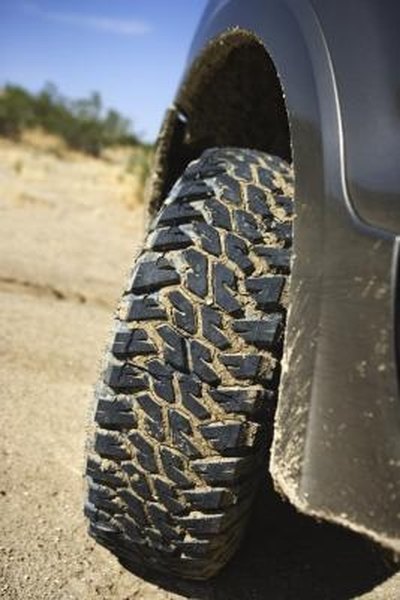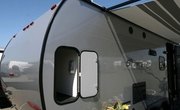
You can drive virtually any vehicle ever manufactured on surfaces other than a paved street, although your level of success will vary widely depending on the vehicle's suitability for off-road travel. Your Ford Escape sport utility vehicle (SUV) allows for fairly easy off-road travel. However, your Escape will perform better for you away from paved surfaces if you have the four-wheel-drive rather than the two-wheel drive version.
Make preparations and repairs before you take your Escape off road. Find a location that allows off-roading---typically an off-road park or national park that allows motor vehicle travel. Take your Escape to your mechanic and have all mechanical systems checked. Keep the Escape in top mechanical shape so you don't head for the trails with any pre-existing problems.
Hit the trails, paying special attention to the driving surface. The standard, unmodified Ford Escape is a lot more like a car than a truck: It has relatively low high ground clearance, so you must watch out for stumps, dips, small bumps and anything else on which your Escape could hang its undercarriage.
Avoid mud, deep sand and water until you feel comfortable going off road and have made some off-road modifications to your Escape---especially off-road tires. The Escape's standard tires are designed for travel on paved roads. The relatively thin tires will become stuck far more easily than will larger, wider tires because the Escape puts more weight per square inch on the thin tires, thus causing it to dig down and sink. Also, stock tires will not have enough gripping tread to help pull your Escape out once it starts to bog down.
Keep in mind that what goes in must come back out. Though your Escape has a fairly tight turning radius, avoid any obstacles you're not completely sure you can clear. For example, only descend hills that your Escape's level of power will allow you to ascend as well. Escapes come equipped with either a four- or six-cylinder motor. The six-cylinder version should provide an adequate amount of power; if you drive a four-cylinder, however, remain wary.
Warnings
- Off-roading can be dangerous and can potentially damage your vehicle.
Tips
- Avoid getting your Escape stuck in mud, sand, clay or water. If your Escape feels like it is getting stuck, put it in four-wheel drive until you are free of the obstacle.
- Check your local area for off-roading clubs. You may be able to go on multi-vehicle trail rides with a group, which tends to pose less of a risk than off-roading alone. If you do travel alone, you equip your vehicle with a winch in case you get stuck.
- Ford designed the Escape for moderate off-road driving, if you plan on off-roading reguarly, you may need to modify the Escape to avoid causing damages.
- Pack plenty of supplies to take with you off road, such as snacks, drinks and even your basic tools when you travel through the woods far away from service stations. Also, a cell phone and a GPS navigation system will both come in handy in the woods in case you get lost or suffer an emergency.
Tips
- Avoid getting your Escape stuck in mud, sand, clay or water. If your Escape feels like it is getting stuck, put it in four-wheel drive until you are free of the obstacle.
- Check your local area for off-roading clubs. You may be able to go on multi-vehicle trail rides with a group, which tends to pose less of a risk than off-roading alone. If you do travel alone, you equip your vehicle with a winch in case you get stuck.
- Ford designed the Escape for moderate off-road driving, if you plan on off-roading reguarly, you may need to modify the Escape to avoid causing damages.
- Pack plenty of supplies to take with you off road, such as snacks, drinks and even your basic tools when you travel through the woods far away from service stations. Also, a cell phone and a GPS navigation system will both come in handy in the woods in case you get lost or suffer an emergency.
Warnings
- Off-roading can be dangerous and can potentially damage your vehicle.
Writer Bio
Jen Davis has been writing since 2004. She has served as a newspaper reporter and her freelance articles have appeared in magazines such as "Horses Incorporated," "The Paisley Pony" and "Alabama Living." Davis earned her Bachelor of Arts in communication with a concentration in journalism from Berry College in Rome, Ga.



